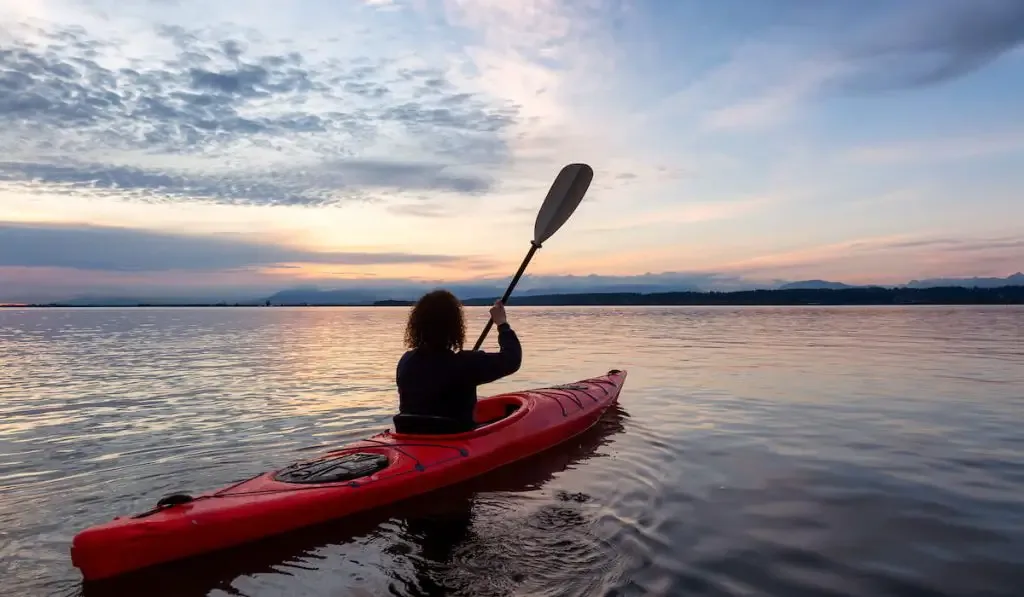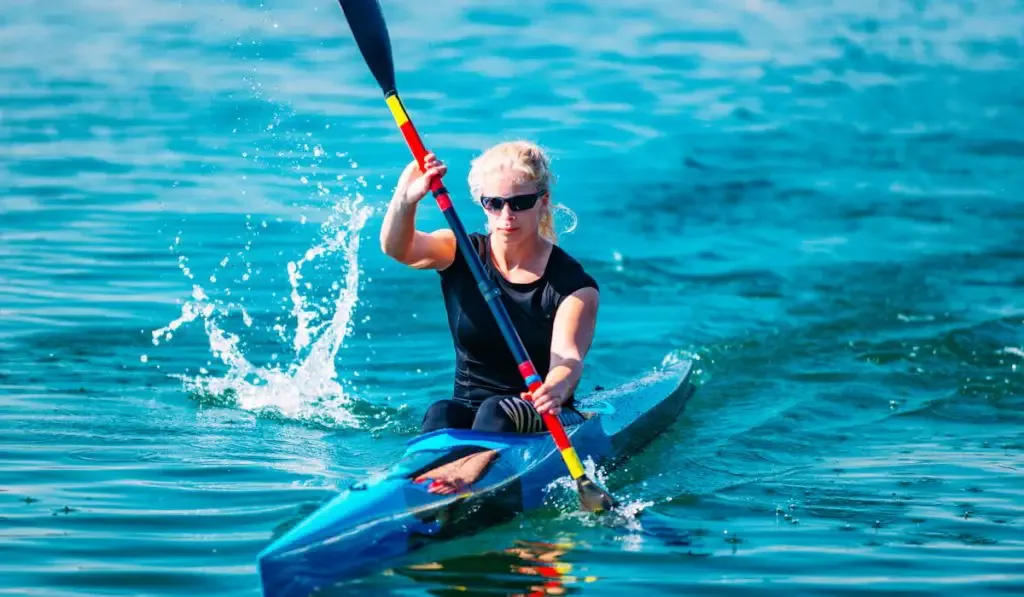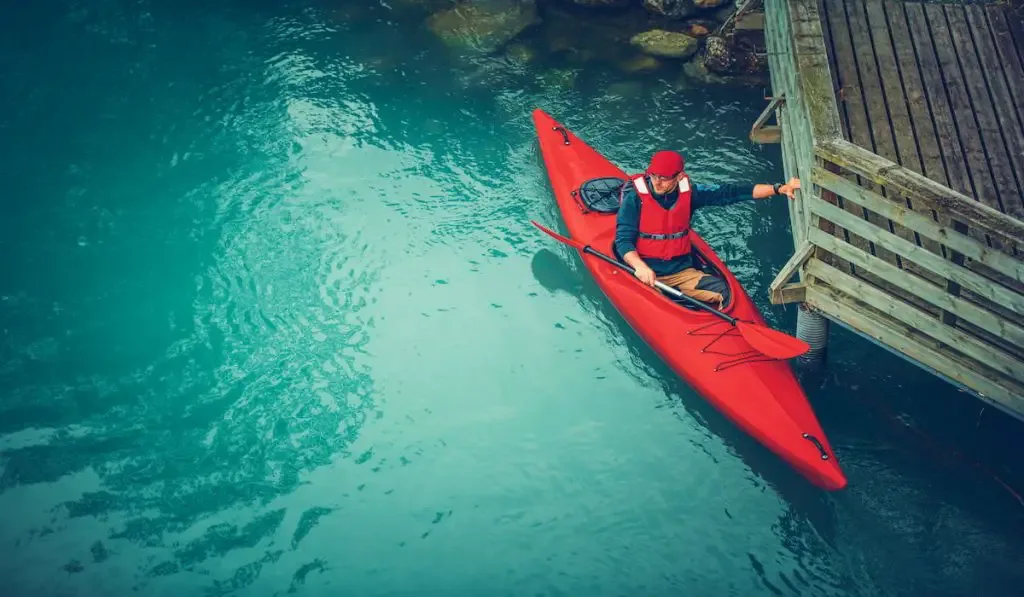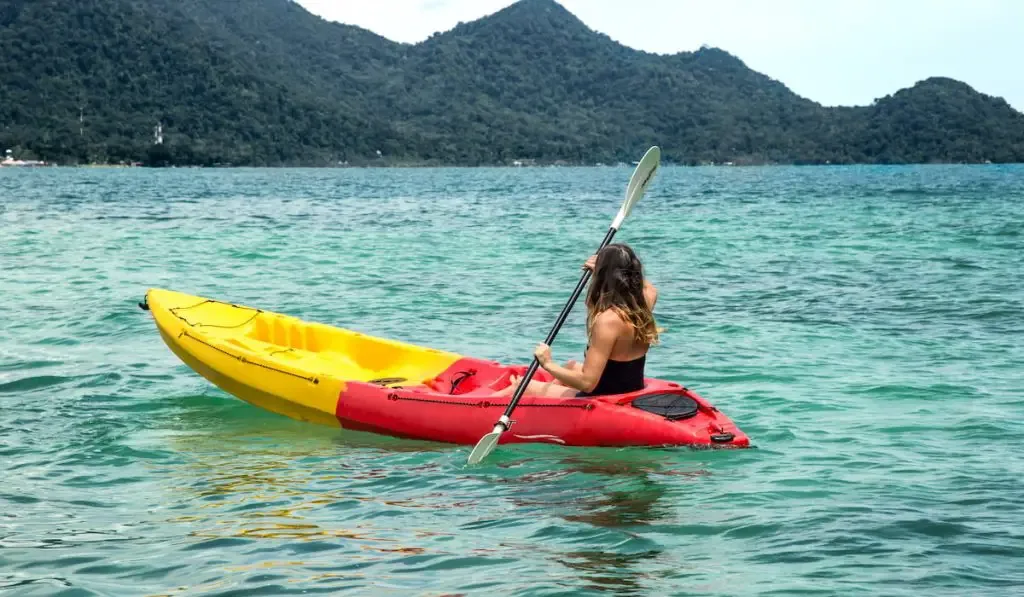Anyone new to water sports may find it difficult to differentiate between a kayak and a canoe. But both types of boats are very different, and their differences show in the experience they offer.
For one, kayaks and canoes do not travel at the same speed. But which is faster? A kayak or a canoe? Let’s see.
Is a kayak faster than a canoe?
Kayaks are faster than canoes. Their low-sitting position when on the water makes them less prone to wind resistance. This, in turn, makes them move faster than canoes, which take on a higher sitting position on the water.
Besides the difference in exposure to wind resistance, water contact, weight, length, paddle design, and construction materials contribute to the speed gap between canoes and kayaks.
In the later paragraphs, we talk about why kayaks are faster than canoes. We also discuss the speed of kayaks, the advantages a kayak has over a canoe, and much more.
Is a Kayak Faster Than a Canoe?
Kayaks are generally faster than canoes.
Canoes and kayaks are both displacement hulls, and as a result, their speed depends on their length.
One would think a canoe and kayak of similar length should, in theory, have the same speed. However, since a kayak is lighter than a canoe, it will be faster than a canoe with a similar length.
In the world of water sports, people often refer to canoes as pickup trucks. When there are multiple passengers in a canoe, the additional weight can hamper the canoe’s speed.
On the other hand, people see kayaks as sports cars. Kayaks are generally lighter than canoes, have lower profiles, and usually accommodate fewer passengers. All these characteristics make kayaks faster than canoes.

Why Are Kayaks Faster Than Canoes?
Kayaks are faster than canoes for the following reasons:
Exposure to Wind Resistance
Since kayaks sit lower in the water than canoes, they catch less wind in their sail. Hence, the wind does not impede their movement as much as it does for canoes.
Paddle Design
While a canoe paddle has a single blade, a kayak paddle has a double blade.
Double-bladed paddles are more efficient since they require less time and effort to reach the water. This efficiency ultimately translates to faster movement.
Also, since the paddle of a kayak is double-bladed, you do not have to move it from one side to the other like a canoe paddle.
Contact With Water
The more a boat has contact with water, the more resistance it experiences.
Since a canoe is flatter and broader than a kayak, it has more contact with the water. While a kayak will mostly float on the water, the canoe has to cut through the water.
Weight and Length of the Boat
Kayaks are generally longer and lighter than canoes; these differences help kayaks travel faster.
The relative heaviness of canoes makes their base sink deeper into water. It also makes wind resistance more effective in holding them down.
Since kayaks are generally longer than canoes, their weights spread out more uniformly. So, they move faster.
There is a short, sporty kayak called a rodeo. It is not designed for speed but to turn and cut. Sea kayaks, on the other hand, are lean, long, and fast.
The Material of the Boat
The material used to build a craft also has a significant impact on how fast it will be. Both kayaks and canoes are produced from lightweight fiberglass and carbon-fiber or light Kevlar. In this instance, the kayak again has the upper hand since they are narrower and lighter in weight.

How Fast Can a Kayak Go?
How fast a kayak can go depends on several factors, including hull load, hull design, paddling technique, weather conditions, and water conditions. Other factors that can decide the speed of a kayak include the paddler’s endurance, strength, and skill level.
How Fast Can an Experienced Kayaker Go?
The skill level of a kayaker has a significant effect on their speed. To be more precise, a kayaker with no experience will be slower than one with a lot of experience.
Considering the factors we mentioned, a less experienced kayaker rowing on calm waters in a 12′ long, 30″ wide kayak can achieve an average kayak speed of 2.5 knots. On the other hand, a more experienced kayaker can surpass 3 knots per hour.
Calculating the Hull Speed of a Kayak
If you want, you can calculate the maximum possible speed or hull speed of a kayak. To do this, calculate the square root of the length of the kayak. Then multiply it by a factor of 4.5.
For instance, the maximum possible speed of a kayak with a waterline of 4 meters is 9km/h. If you have a 5.5-meter-long kayak, the maximum speed you can achieve is 10.55km/h. However, only well-trained and experienced kayakers can reach the top velocity for these kayaks.

Is a Canoe or Kayak Easier?
Kayaks are easier than canoes, and the following are some reasons why:
- Canoes are heavier than kayaks and require more effort to paddle through the water.
- Canoes require more coordination, and the paddler must know when to use the various paddling strokes.
- Canoes are harder to turn while trying to maintain forward momentum.
- A skinny kayak that has the same length as a fat canoe is easier to paddle. Unlike canoes, kayaks experience lower friction and have a reduced wet surface area. As a result, they are easier to move forward on a straight line and are ideal for rough water conditions.
What Is the Advantage of a Kayak Over a Canoe?
Here are some advantages of a kayak over a canoe:
- Most kayaks often weigh less than canoes making it easy to transport them from one place to another.
- The hull design of a kayak is more efficient than that of a canoe. Consequently, kayaks require less effort to paddle.
- Kayaks are more trouble-free to maneuver than canoes and do not require too much effort from the paddler to turn.
- Kayaks have closed cockpits that ensure the paddler gets protection from the wind, spray, and sun.
- You can easily roll a kayak upright after it capsizes.

Final Take
Kayaks are faster than canoes. This is all thanks to them sitting lower on the water, facing less wind resistance, and weighing less. The use of double-blade paddles in kayaks also contributes to their speed. While kayaks typically have a calculated maximum speed, one may never sail at that speed without the right skills and experiences.
Resources:
- https://www.kingsofadventure.com/canoe-vs-kayak/
- https://www.kayakingnear.me/average-kayak-speed/
- https://adventure.howstuffworks.com/outdoor-activities/water-sports/kayak-or-canoe.htm
- https://watercraft101.com/canoe-vs-kayak/
- https://threesisterskayakrental.com/easier-kayak-canoe/
- https://welovewatersports.com/au/how-fast-can-kayaks-go/
